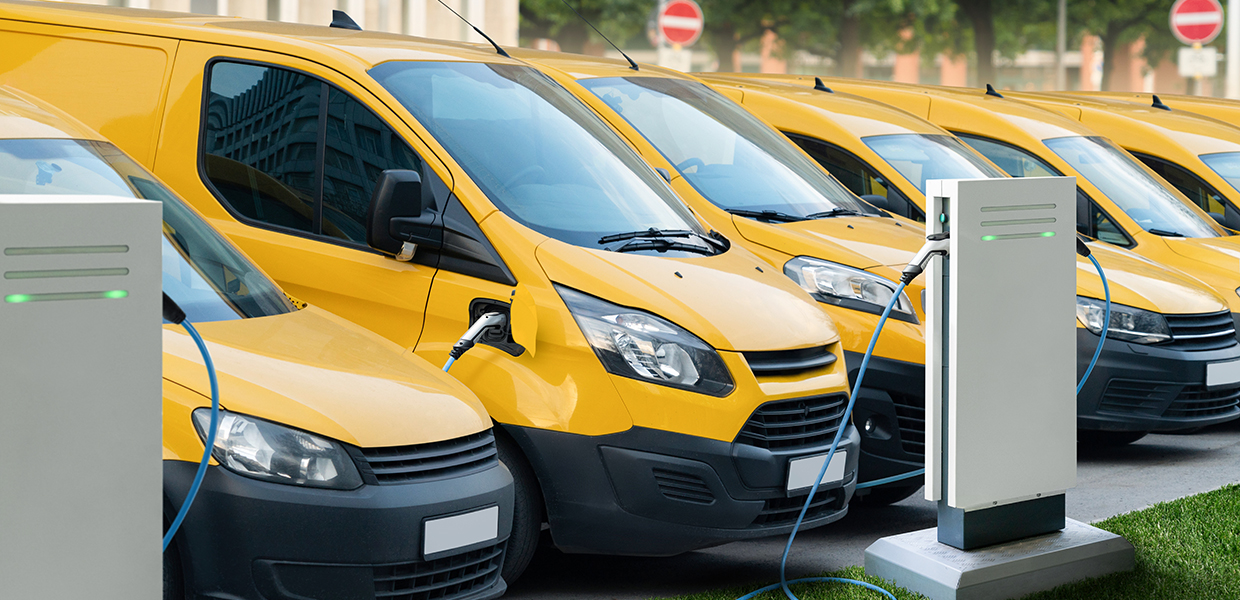Significant progress has been made towards the eMobility transition within the EU transportation and logistics industry in the past year. Data from the International Council on Clean Transportation (ICCT) shows a steady upward trend for zero emission vehicle (ZEV) sales across the region.
"The transition to eMobility is integral to future growth in the logistics sector,” says Nick Antoniou, Global Commercial Lead, eMobility at DLL. “We're seeing increased interest from the market looking with regards to investing in electric commercial vehicle adoption, driven by both environmental concerns and long-term cost savings."
Increased efficiency of next generation e-trucks allows them to travel further on a single charge. This has removed one of the main barriers to entry into the market and provides one explanation for the positive uptake. Along with this, S&P Global Mobility predicts a 30 percent drop in US prices for Class 4-7 e-trucks (14,001 to 33,000 lbs) by 2030, driven by declining battery costs, manufacturing improvements, new technology, and economies of scale.
However, necessary charging infrastructure to support essential expansion of electric heavy-duty vehicles is not progressing fast enough in some markets and continues to fall short of developments in the electric car market.
Important EV trends in Europe
An ICCT market spotlight on the Race to Zero reveals buoyant demand for reduced emissions heavy duty vehicles (HDVs) in the three largest EU markets (Germany, France and Italy). Germany is particularly active, representing 40 percent of total HDV ZEV sales in the first quarter of 2024, despite a nine percent contraction in the market overall.
Sales of light and medium ZEVs also increased over the same period and made up more than eight percent of EU sales, compared to six percent at the end of 2023. Again, Germany led the charge, accounting for 68 percent of commercial ZEV sales in the second quarter. Conversely, the French market contracted from 38 percent to 11 percent, compared to 2023.
“These figures suggest a measured, but restrained approach to the eMobility transition,” comments Nick Antoniou. “With the right finance in place, combined with appropriate financial incentives, and attractive investment opportunities, more transportation and intralogistics operators may be persuaded to accelerate their plans.”
Do you want to read more about the US EV market? Dive deeper into our comprehensive blog post.
Expert Vision – eMobility trends and finance solutions
McKinsey & Company, management consultants
An analysis on European mobility finance, compiled by McKinsey & Company, suggests full-service leasing, new-car subscriptions, and financing for used cars are all promising businesses with the potential to become core mobility-finance segments by 2030.
The report predicts micromobility and charging infrastructure annual hypergrowth of more than 50 percent in some segments and increasing demand for new full-service and flexible offerings, such as X-as-a-service (XaaS) business models (where X stands for services such as vehicle or charging subscriptions), especially for electric commercial vehicles who may benefit from using an EV charging service provider, for example.
“Micromobility and electrification is on the rise in Europe, creating new opportunities for financial services that provide solutions to support access to mobility. Trends for used-car financing, micromobility, and EV charging infrastructure will create around 25 billion euros of new annual revenue for mobility-finance providers by 2030. Of this, electric passenger and light commercial vehicles will capture the lion’s share, accounting for more than 90 percent of total revenue.



